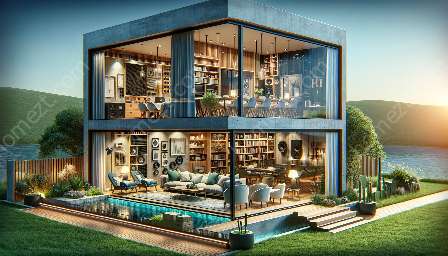Sound waves behave in unique ways within closed spaces, impacting our understanding of sound and noise control in homes. This topic aims to explore the characteristics of sound waves, their impact on closed spaces, and strategies for noise control in comprehensive depth.
Understanding Sound and Noise in Closed Spaces
To comprehend the characteristics of sound waves in closed spaces, we must first understand the nature of sound and how it behaves in various environments. Sound waves are mechanical vibrations that travel through a medium, such as air, and can be reflected, absorbed, or transmitted by different surfaces. In closed spaces, sound waves can interact with walls, floors, ceilings, and objects, leading to unique acoustical properties that affect our perception of sound and noise.
Key Characteristics of Sound Waves in Closed Spaces
1. Reflection: In closed spaces, sound waves can bounce off surfaces, leading to reverberation and echo effects that influence the overall acoustic quality of the environment. Understanding the reflective properties of different materials and surfaces can help in managing sound within closed spaces.
2. Absorption: Some materials within closed spaces can absorb sound waves, reducing reverberation and improving overall acoustics. Understanding the absorption coefficients of materials is crucial for optimizing sound control in homes.
3. Transmission: Sound waves can also transmit through walls and floors, impacting the transfer of noise between different areas within a home. Understanding transmission loss and isolation techniques is essential for noise control in residential settings.
Noise Control in Homes
Improving noise control in homes requires a multifaceted approach that incorporates the characteristics of sound waves in closed spaces. Strategies such as acoustic treatments, soundproofing materials, and spatial design considerations can significantly impact the acoustical comfort within residential environments.
Acoustic Treatments
Applying acoustic treatments such as sound-absorbing panels, diffusers, and bass traps can help manage sound reflections and reverberations in closed spaces. It is crucial to understand the placement and effectiveness of these treatments for optimal noise control.
Soundproofing Materials
Utilizing soundproofing materials such as acoustic insulation, resilient channels, and mass-loaded vinyl can minimize the transmission of sound through walls and floors, enhancing privacy and comfort within homes.
Spatial Design Considerations
Architectural and interior design choices can greatly influence the acoustical properties of a home. Factors such as room layout, furniture placement, and the use of sound-absorbing materials play a critical role in controlling noise within closed spaces.
Conclusion
By delving into the characteristics of sound waves in closed spaces and their impact on understanding sound and noise in homes, we can enhance our ability to create acoustically comfortable living environments. Implementing effective noise control measures based on a comprehensive understanding of sound wave behavior will lead to improved quality of life and increased comfort within residential spaces.





















